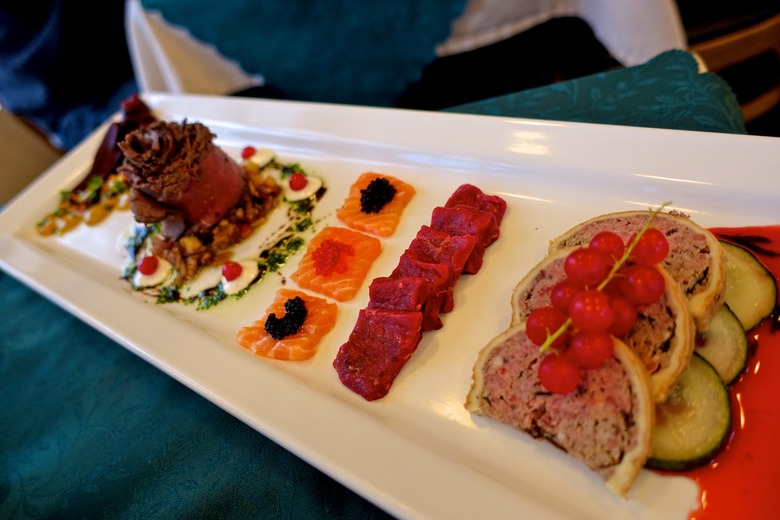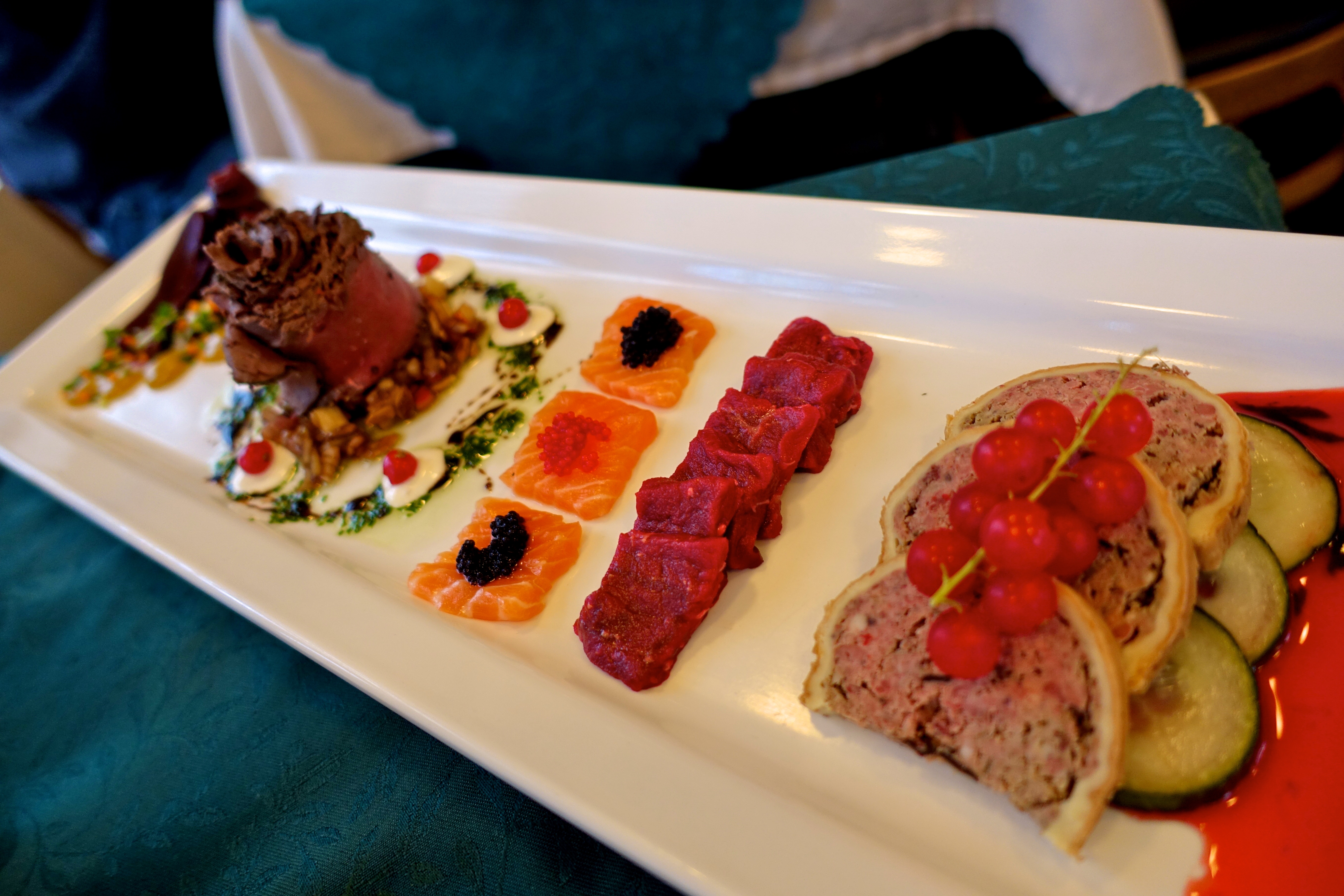I Ate Fermented Shark Meat In Iceland
During a visit to Iceland to learn about the country's natural beauty and acclaimed bottled water, I told some Reykjavík locals that I wanted to experience the real Icelandic foods — the stuff the locals eat, not what's served at watered-down tourist traps — and was pointed to a restaurant away from the hustle and commotion of the city center. Along my travels, I'd eaten traditional meals like the ever-so-satisfying and hearty lamb soup, and a ton of succulent langoustine, but I was hungry for something more unusual and offbeat. I arrived at Þrír Frakkar, a tiny little Icelandic establishment, with barely over 10 tables in a local pub-like setting. The emphasis here is apparently on truly Icelandic, classic favorites that are prepared for guests in the most authentic manner, something that's not easy to find in the tourist-friendly city of Reykjavik.
Sitting down at my table, I was immediately thrown into the treacherous deep end of Icelandic foods when my dining companions insisted that I try their local delicacy, hákarl. It's Iceland's infamous national dish with quite the notorious reputation for testing even the most adventurous of stomachs. Greenland shark is fermented for up to 12 weeks, and then hung out to dry for several months, resulting in what can only be described as a full assault on the senses.
A small silver bowl was placed in front of me, with white, gelatinous-looking cubes of flesh that almost look like cheese. An accompanying bottle of Brennivín and a shot glass is also placed next to this. Roughly translated as "burnt wine" (i.e., distilled liquor, more or less), it's customary to drink a shot of this traditional caraway-flavored schnapps with the hákarl. This fact raised all the concerns that any food requiring a powerful shot as a chaser should raise, but it was too late to turn back. I now had an audience of morbidly curious and amusingly entertained locals watching from nearby tables. The hákarl had a distinct odor, slightly ammonia-like, and taking a small cube of this intimidating delicacy, I moved it to my mouth, ready to taste what would be the most Icelandic moment of my time here.
In all honesty, it wasn't as bad as what it had built up to be. It was chewy in texture, almost spongey, with an unpleasant pungent taste — but as a seasoned adventurous (OK, more like outrageously weird) eater, I was able to stomach its off-putting texture and offensively fishy taste.
Or so I thought.
Literally no less than 10 seconds after thinking, "OK, it wasn't that bad" — it hit me. And when I say hit me, it wasn't like a playful slap across the face — eating hákarl is like a Mack truck at 200 miles per hour slam to the head. It begins as a slight tickle at the back of your throat. It's almost like a tingle, like your mouth is questioning what you just did. It's confused as it tries to process the insane combination of an incredibly odd firm Jell-O-like meat texture, with the gut-wrenching fumes that seem to almost now decide to unleash their full potentiality. My mouth started to water, like it wanted to gag, and I was overtaken by a putrid aftertaste that can only be described as a mixture of the stinkiest of Limburger cheese that's been sitting out in the sun for days, and a piece of rotten, moldy chicken that you've found at the back of a college dorm refrigerator. My eyes were tearing up, and my mouth couldn't stop gagging on this horrid taste sensation.
Frantic, I grabbed my shot of Brennivín and throw it down my throat in a feeble attempt to extinguish the aggressive invasion on my poor taste buds. It was like the driver of the aforementioned Mack truck had gotten out of his truck to check it I was OK, and then decided to football tackle me into the ground for fun. At this stage, I was coughing, spluttering, gagging, and tearing up all at the same time — and the locals were loving every minute of it.
I'm not exaggerating when I say that this aftertaste lingered for a solid 30 minutes while I ate other foods. I don't think that even the strongest of palate cleansers would have been able to counteract the bodily response I had to that small bite. But I had conquered it (to a certain, debatable degree), and it was time to try other less intimidating local dishes.
A selection of different meats was laid out, starting with reindeer pate, a rich and salty contrast to the meal's pugnacious start. Whale is served in two forms, as a sashimi that's more reminiscent of a carpaccio than a sashimi, firm and almost steak-like in texture, but with a similar taste to a fatty tuna, and a whale steak, surprisingly smooth and soft. Puffin, another very popular local dish in Iceland, comes as a beautifully dark and rich red meat. It's almost comparable to kangaroo, with its gaminess and smoky tones, but with a chicken-like, fibrous texture. Horse is another very common meat eaten in Iceland, and eating the steak served to me at Þrír Frakkar, the end result is incredibly similar to a well-seasoned, lean beef steak. At the end of the day, this really is one of the few places in Reykjavik where you can experience a truly authentic, traditional Icelandic meal and sample a range of unique meats and seafood in a charmingly rustic setting.

